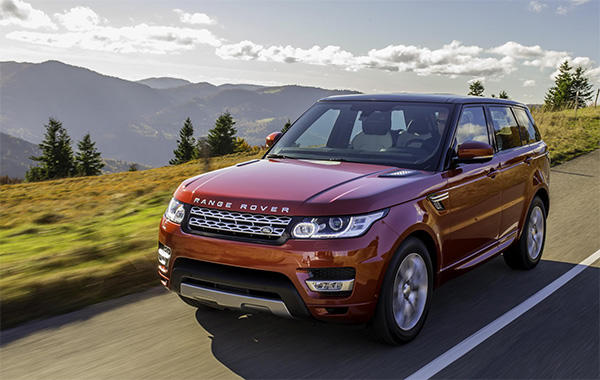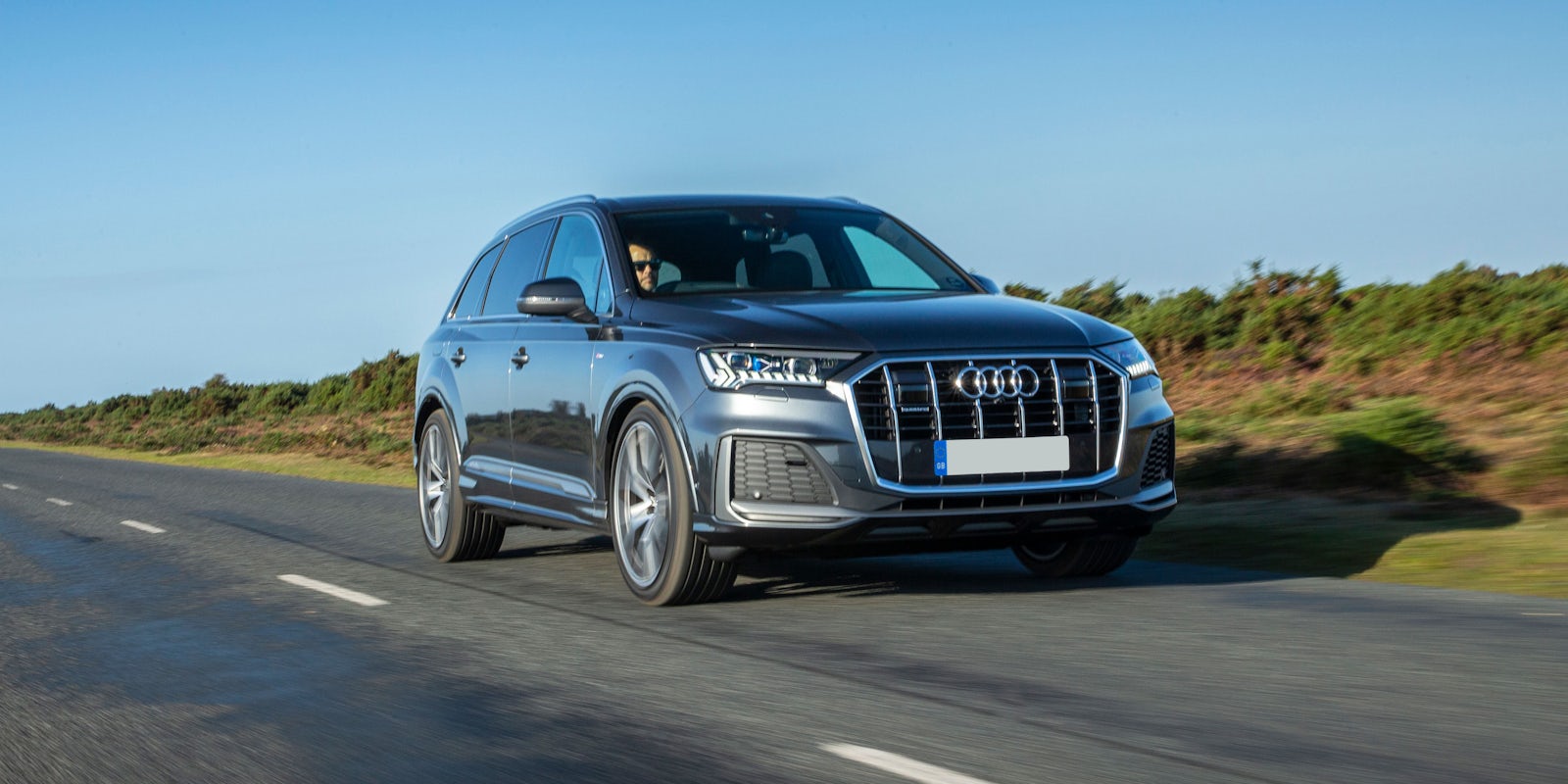Range Rover Sport vs Audi Q7 – seven seater status symbol round-up
July 22, 2014 by Andrew Evans

Prestige crossovers are all well and good if you have 2.4 children, but what if you have more? Or if the little darlings invite their schoolfriends over to stay?
If that sounds like your life, both Audi and Land Rover make cars just for you – the Q7 and Range Rover Sport. Each has a pair of occasional rear seats each to swell seating space to seven, but which is the best all-rounder? We’re taking a look at how the models stack up against each other.
Styling
Audi’s bus is not really styled per se, more smelted. There’s an awful lot of featureless expanses littered about the car and there doesn’t seem to have been an awful lot spent at the exterior design stage. That said, it does carry off a somewhat imposing vibe – though that may just be the presence of a giant Audi grille.
The new Range Rover Sport though is a handsome beast. No area of metalwork is allowed to press on without the occasional crinkle and they’ve really developed the shape from the previous generation’s slightly-squashed big boy’s Range Rover.
Interior and practicality
As a general rule of thumb, Audi’s interiors don’t really excite. They’re unquestionably well-finished and everything is satisfyingly chunky, but the merger of ergonomics and aesthetics has never really clicked. At least on these larger crossover models leather is included as standard and there’s no way you’re going to be disappointed with what you get – but the Range Rover is leagues ahead here.
However, there is almost no difference in the space offered inside the two cars. In almost every department, there’s only a couple of millimetres in it – generally in the Audi’s favour.
In terms of boot space with five people on board, the cars are pretty much level-pegging at 784 litres (Range Rover) and 765 litres (Q7), but the Audi gets 15 per cent more space with the middle row folded and claims a hatchback-like 330 litres even with the third row occupied. Land Rover don’t supply figures for the capacity with seven occupied seats, so suffice to say it’s not very much!
Engines
Diesel is the fuel of choice at Audi, and you can choose from a 3.0-litre six-cylinder engine in either 201hp or 242hp forms, or a 4.2-litre V8 with 335hp. The range isn’t compliant with Euro 6 emissions regulations yet, so expect an update for these before too long, and they all slot into VED band J or L – the latter for the 4.2 only. Official economy figures are between 31mpg (4.2-litre engine) and 39mpg (3.0-litre engines).
Much of the Range Rover Sport line-up is similarly dieseled. The Land Rover SDV6 3.0-litre is good for 288hp while still returning 37.7mpg combined and falling into the same VED band J as Audi’s offering. Above this is a 4.4-litre V8 diesel rated to 334hp and 32.5mpg – just edging out the Audi on both figures. There’s one petrol on offer too – a mad, supercharged 5.0-litre V8 shovelling 503hp into the planet. 22mpg and top whack tax!
Driving
The Q7 is more of a road-focussed tool than its looks suggest. Although all Q7s have four-wheel-drive as standard, it’s not truly intended for proper mudplugging, but it’s capable enough to deal with pretty much any road conditions the UK can throw at you, even if you live deep in the countryside. The relatively firm suspension can lead to a few more angry noises over potholes than you might expect, but it’s at least surprisingly good when driven down a fast B-road.
As a counterpoint, the Range Rover Sport is good everywhere. The on-road manners are pretty close to impeccable – not necessarily limousine levels of isolation, but not far off – and it’ll certainly keep up with the Audi on a fast cross-country drive, especially if set to sport mode with its angry red dials. Off-road, it’s still a Range Rover. It might not be a dedicated canyon-crawling tool like its stablemates, but it’s far more capable at negotiating significant obstacles than many drivers will be.
Value for money
Starting at around £44,000 for the entry level 3.0 TDI Q7, rising to up to £64,000 for the top-spec V8 diesel, the Q7 isn’t cheap but it undercuts the Range Rover Sport by a good chunk. It’s well appointed with all the standard, expected kit but beware that options list – Audi options are legendarily expensive and you can soon rack up the difference in price with some unwise ticking.
The Range Rover seems positively pricey by comparison, with ownership requiring at least £60,000 from you – rising to over £81,000 for the V8 diesel or supercharged 5.0-litre petrol. It does, however, come with a much higher level of standard kit than the Q7, so it’s worth scrutinising the price differences closely. For example, the Range Rover Sport comes with standard-fit electric memory seats, even on the lowest trim level, but they’re a £700 option on the Q7.
Price-wise, there’s less of a gap between the two vehicles than the price lists might suggest, but the Q7 does just nick it.
Verdict
The Audi Q7 does just about everything well enough that it should make the shortlist, and a 7.1 aggregated carwow score backs that up. You won’t be disappointed with it.
Until you pull up alongside a Range Rover Sport, which does everything better. The experts agree and the massive 8.8 score is so far beyond any other non-Land Rover offering in this sector it’s hard to see how anyone is going to catch up.
But you pay for the privilege. Like for like the Sport is at best £8,000 more expensive than the Audi. It should be the better car…
Want to know more about the Audi Q7 and Range Rover Sport?
You can see more photos, read aggregated critics’ review and find more details about each car in the Range Rover Sport and Audi Q7 review sections.

Audi Q7
















